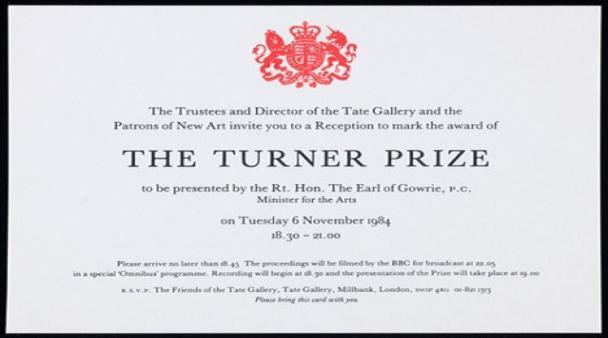The Turner Prize will soon come around again on its annual pass of the London artworld; named after the painter J. M. W. Turner, the award is an annual prize presented to a British visual artist under the age of 50. Awarding the prize is organised by the Tate gallery and staged at Tate Britain. Since its beginnings in 1984 it has become the United Kingdom’s most publicised art award and this year will be celebrating its 30th year.
Each year after the announcement of the four nominees and during the build-up to the announcement of the winner, the Prize receives intense scrutiny from the media. As of 2004 the annual prize has awarded £40,000 with £25,000 to the winner, and £5000 to each nominee. There have been 29 winning artists thus far including Yoko Ono, Anish Kapoor, and Damien Hirst, with many controversial winners along the way.
In the lead up to the 30th Anniversary of the Turner Prize, presented at Tate Britain from 30th September to 4th January – with its long history, and many media controversies – we take a look at some of the winners of the Prize of times past. Beginning with the first winner of the Turner Prize; octogenarian artist Malcolm Morley.
Malcolm Morley, was at the time an English born painter living in the United States, He won the first Turner prize in 1984 following an exhibition at the Whitechapel Gallery in London that was instigated by the artist’s long-term supporter, Nicholas Serota. Of the Turner Prize the artist has stated; “It wasn’t so hot back then, and I got the smallest amount of money they’ve ever given out.” There was also considerable criticism at the time that the prize had been given to someone, that although British born was living in America.
The Other nominees for the inaugural year included sculptor Richard Deacon, the collaborative duo Gilbert & George, abstract painter Howard Hodgkin and sculpture and installation artist Richard Long – but unlike his fellow nominees Morley just did not fit into any one particular genealogy; with his connection to Photorealism, or Super-realism – as he named it – later being discarded by the artist in favour of a more expressive method of painting – that critics deemed a kind of Neo-expressionism. But as the artist has stated, with a wry quip; once a movement is named it’s dead; “it’s always worth remembering that as soon as a movement is named you know it’s over,” he said. “Picasso didn’t call those paintings cubism. He was just trying to get to another layer of realism.”
Now in his 80s; Morley’s life has been an interesting one – which has included prison; with a three year stint in Wormwood Scrubs prison, after having been homeless for a time and becoming a petty thief, a period of psychoanalysis, and five marriages – the artist has not been particularly troubled by the notion of a status quo, but has shown a great diversity in his career seeing Morley associated with the Euston Road school of painting via Cézanne, abstraction, abstract expressionism, neo–expressionism and post-pop art.
The painter was born in Stoke Newington,London, in 1931. Morley never knew his father, and when the artist’s mother married a former Welsh miner Morley was brought up under a different name. The artist’s definitive memory from this troubled childhood was of making a balsawood model of the navy battleship HMS Nelson.
The object would seep into the artist psyche and go on to influence his future works; “I loved making models and I’d just finished this one and put it on a windowsill overnight ready to paint in the morning. That night we were blown up by a German V-1 bomb, a doodlebug, the whole of the wall was blown away and, of course, the model was lost, as was our home. Years later, when I was in psychoanalysis, a memory of the bombing came up and I realised that all those ships I’d done had to be to do with me trying to paint that battleship that I never finished.”
Morley’s enthusiasm for America was stirred by an important Tate exhibition of contemporary American art, and “a girl I met on the number 37 bus”.The artist followed her back to America and they got married – the first of five marriages. “It didn’t last long, a year or so, but I knew I’d stay.” Gradually he worked his way into the New York art world and began to hang out at the Cedar Street Tavern which was frequented by Willem de Kooning, Jackson Pollock and Franz Kline. Morley became close to Roy Lichtenstein, who later arranged teaching jobs for the artist, he also met Salvador Dalí and Andy Warhol who was “shy, polite, treated me like an elder statesman”.
Over the prevailing 30 years the artist has viewed with interest artistic developments in the UK, and indeed subsequent winners of The Turner Prize and has said he liked the way that the Young Brit Artists “somehow found a way of reinventing themes”. Although Morley has spoken a little less favourably of some; “When Damien Hirst first appeared I thought this was the real thing. But I’ve never seen anybody go down so fast, and I was rather saddened because I really thought he had something to offer.”
Turner Prize 2014 Tate Britain 30 September 4 January

